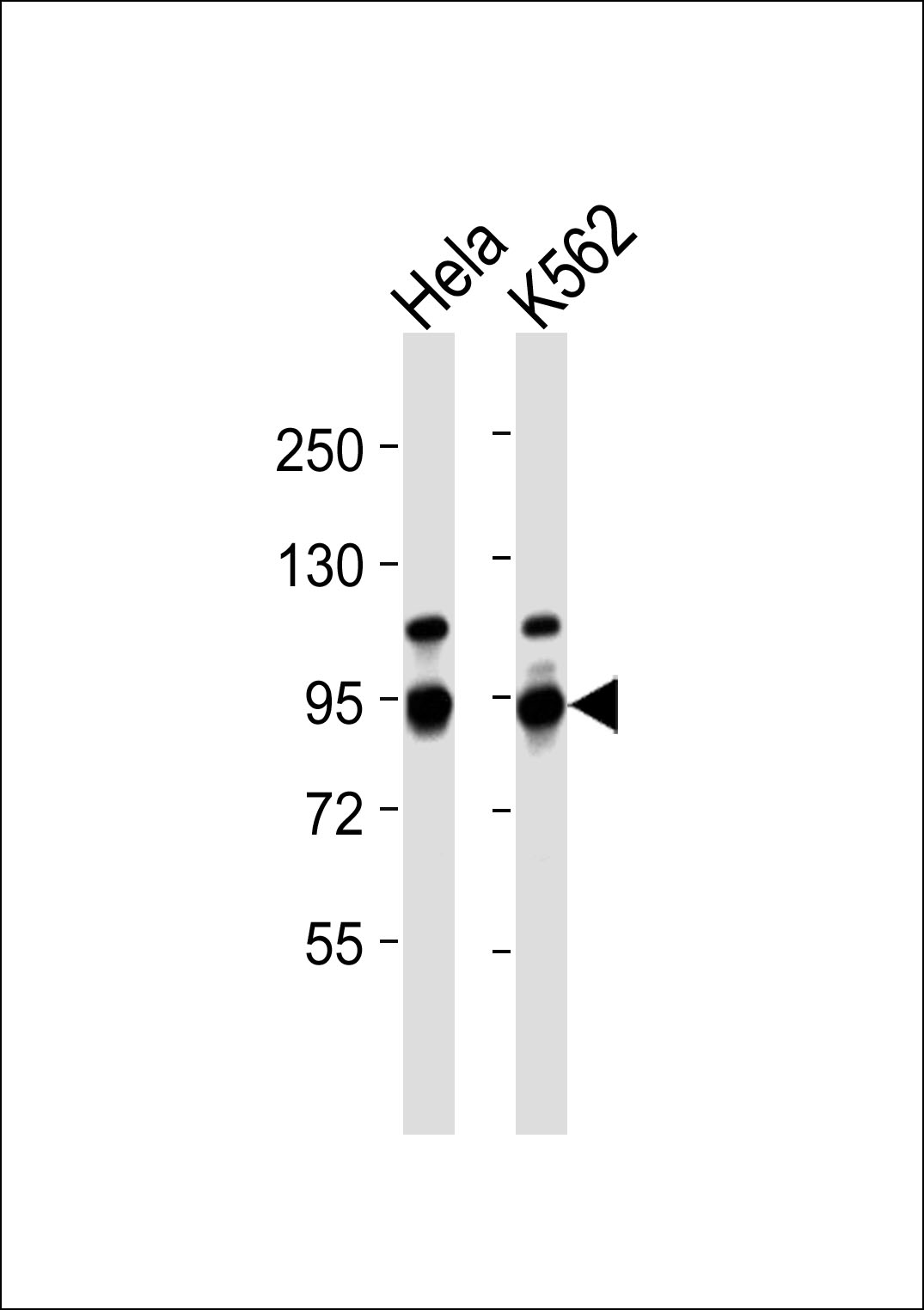ILF3 Antibody
Purified Rabbit Polyclonal Antibody (Pab)
- SPECIFICATION
- CITATIONS: 1
- PROTOCOLS
- BACKGROUND

Application
| WB |
|---|---|
| Primary Accession | Q12906 |
| Reactivity | Human, Mouse, Rat |
| Host | Rabbit |
| Clonality | Polyclonal |
| Calculated MW | 90 KDa |
| Antigen Region | 301 - 360 aa |
| Gene ID | 3609 |
|---|---|
| Other Names | Interleukin enhancer-binding factor 3, Double-stranded RNA-binding protein 76, DRBP76, M-phase phosphoprotein 4, MPP4, Nuclear factor associated with dsRNA, NFAR, Nuclear factor of activated T-cells 90 kDa, NF-AT-90, Translational control protein 80, TCP80, ILF3, DRBF, MPHOSPH4, NF90 |
| Target/Specificity | KLH conjugated synthetic peptide derived from human ILF3 |
| Dilution | WB~~ 1:1000 |
| Format | 0.01M PBS, pH 7.2, 0.09% (W/V) Sodium azide, Glycerol 50% |
| Storage | Store at -20 °C.Stable for 12 months from date of receipt |
| Name | ILF3 |
|---|---|
| Synonyms | DRBF, MPHOSPH4, NF90 |
| Function | RNA-binding protein that plays an essential role in the biogenesis of circular RNAs (circRNAs) which are produced by back- splicing circularization of pre-mRNAs. Within the nucleus, promotes circRNAs processing by stabilizing the regulatory elements residing in the flanking introns of the circularized exons. Plays thereby a role in the back-splicing of a subset of circRNAs (PubMed:28625552). As a consequence, participates in a wide range of transcriptional and post- transcriptional processes. Binds to poly-U elements and AU-rich elements (AREs) in the 3'-UTR of target mRNAs (PubMed:14731398). Upon viral infection, ILF3 accumulates in the cytoplasm and participates in the innate antiviral response (PubMed:21123651, PubMed:34110282). Mechanistically, ILF3 becomes phosphorylated and activated by the double-stranded RNA-activated protein kinase/PKR which releases ILF3 from cellular mature circRNAs. In turn, unbound ILF3 molecules are able to interact with and thus inhibit viral mRNAs (PubMed:21123651, PubMed:28625552). |
| Cellular Location | Nucleus, nucleolus. Cytoplasm. Nucleus. Note=Localizes in the cytoplasm in response to viral infection. The unphosphorylated form is retained in the nucleus by ILF2. Phosphorylation at Thr-188 and Thr-315 causes the dissociation of ILF2 from the ILF2-ILF3 complex resulting in a cytoplasmic sequestration of ILF3. Localized in cytoplasmic mRNP granules containing untranslated mRNAs. |
| Tissue Location | Ubiquitous. |

Provided below are standard protocols that you may find useful for product applications.
Background
May facilitate double-stranded RNA-regulated gene expression at the level of post-transcription. Can act as a translation inhibitory protein which binds to coding sequences of acid beta-glucosidase (GCase) and other mRNAs and functions at the initiation phase of GCase mRNA translation, probably by inhibiting its binding to polysomes. Can regulate protein arginine N- methyltransferase 1 activity. May regulate transcription of the IL2 gene during T-cell activation. Can promote the formation of stable DNA-dependent protein kinase holoenzyme complexes on DNA. The phosphorylated form at Thr-188 and Thr-315, in concert with EIF2AK2/PKR can inhibit vesicular stomatitis virus (VSV) replication (By similarity).
References
Kao P.N.,et al.J. Biol. Chem. 269:20691-20699(1994).
Patel R.C.,et al.J. Biol. Chem. 274:20432-20437(1999).
Xu Y.-H.,et al.Mol. Genet. Metab. 68:441-454(1999).
Duchange N.,et al.Gene 261:345-353(2000).
Saunders L.R.,et al.J. Biol. Chem. 276:32300-32312(2001).
If you have used an Abcepta product and would like to share how it has performed, please click on the "Submit Review" button and provide the requested information. Our staff will examine and post your review and contact you if needed.
If you have any additional inquiries please email technical services at tech@abcepta.com.














 Foundational characteristics of cancer include proliferation, angiogenesis, migration, evasion of apoptosis, and cellular immortality. Find key markers for these cellular processes and antibodies to detect them.
Foundational characteristics of cancer include proliferation, angiogenesis, migration, evasion of apoptosis, and cellular immortality. Find key markers for these cellular processes and antibodies to detect them. The SUMOplot™ Analysis Program predicts and scores sumoylation sites in your protein. SUMOylation is a post-translational modification involved in various cellular processes, such as nuclear-cytosolic transport, transcriptional regulation, apoptosis, protein stability, response to stress, and progression through the cell cycle.
The SUMOplot™ Analysis Program predicts and scores sumoylation sites in your protein. SUMOylation is a post-translational modification involved in various cellular processes, such as nuclear-cytosolic transport, transcriptional regulation, apoptosis, protein stability, response to stress, and progression through the cell cycle. The Autophagy Receptor Motif Plotter predicts and scores autophagy receptor binding sites in your protein. Identifying proteins connected to this pathway is critical to understanding the role of autophagy in physiological as well as pathological processes such as development, differentiation, neurodegenerative diseases, stress, infection, and cancer.
The Autophagy Receptor Motif Plotter predicts and scores autophagy receptor binding sites in your protein. Identifying proteins connected to this pathway is critical to understanding the role of autophagy in physiological as well as pathological processes such as development, differentiation, neurodegenerative diseases, stress, infection, and cancer.

